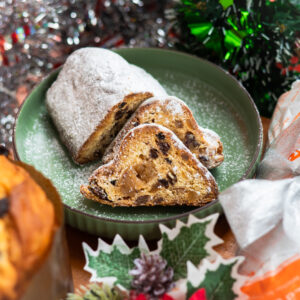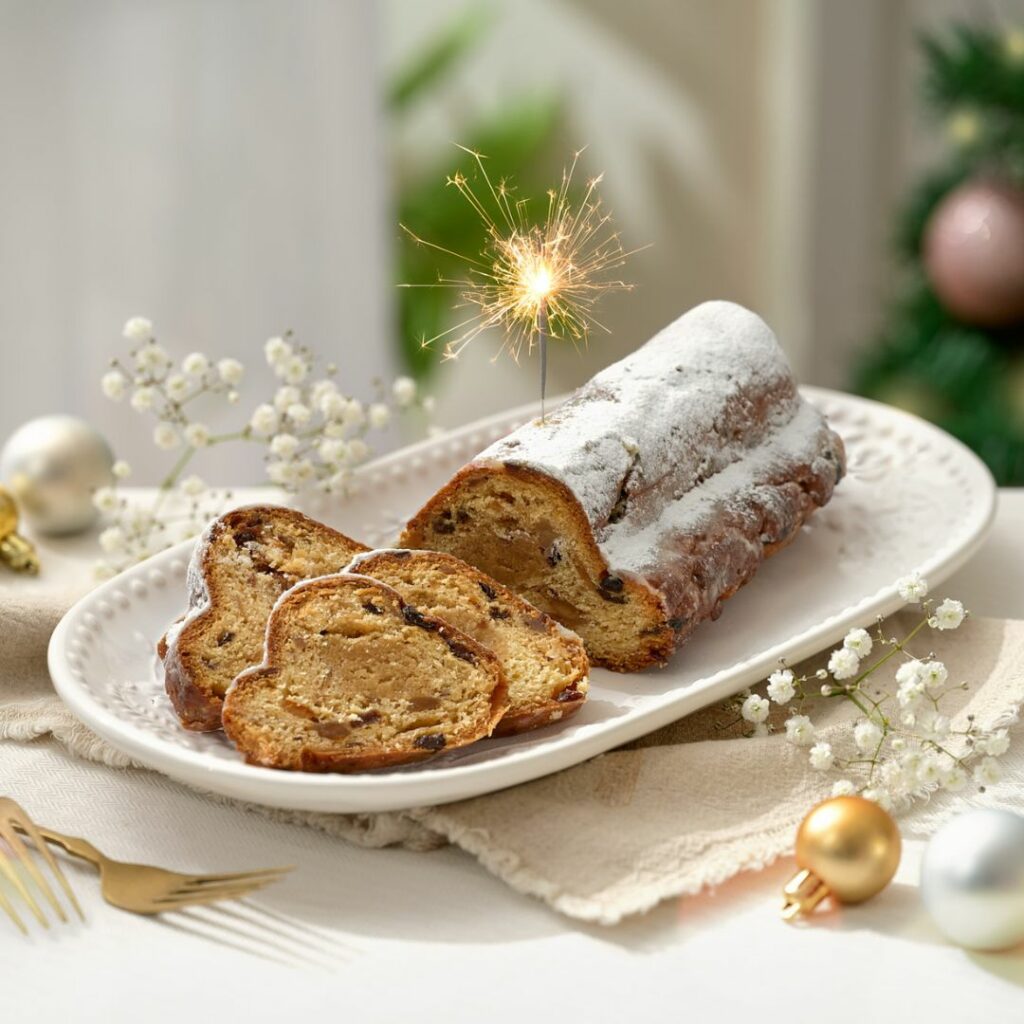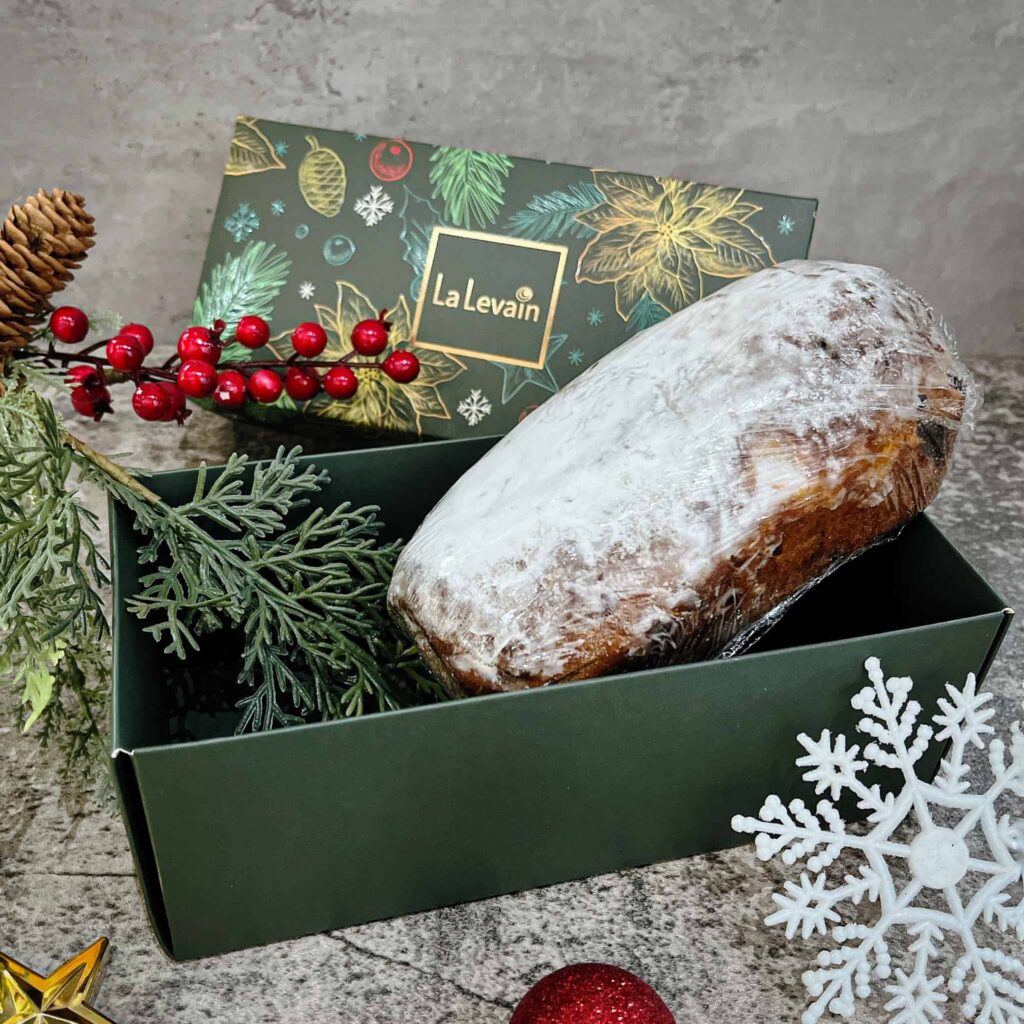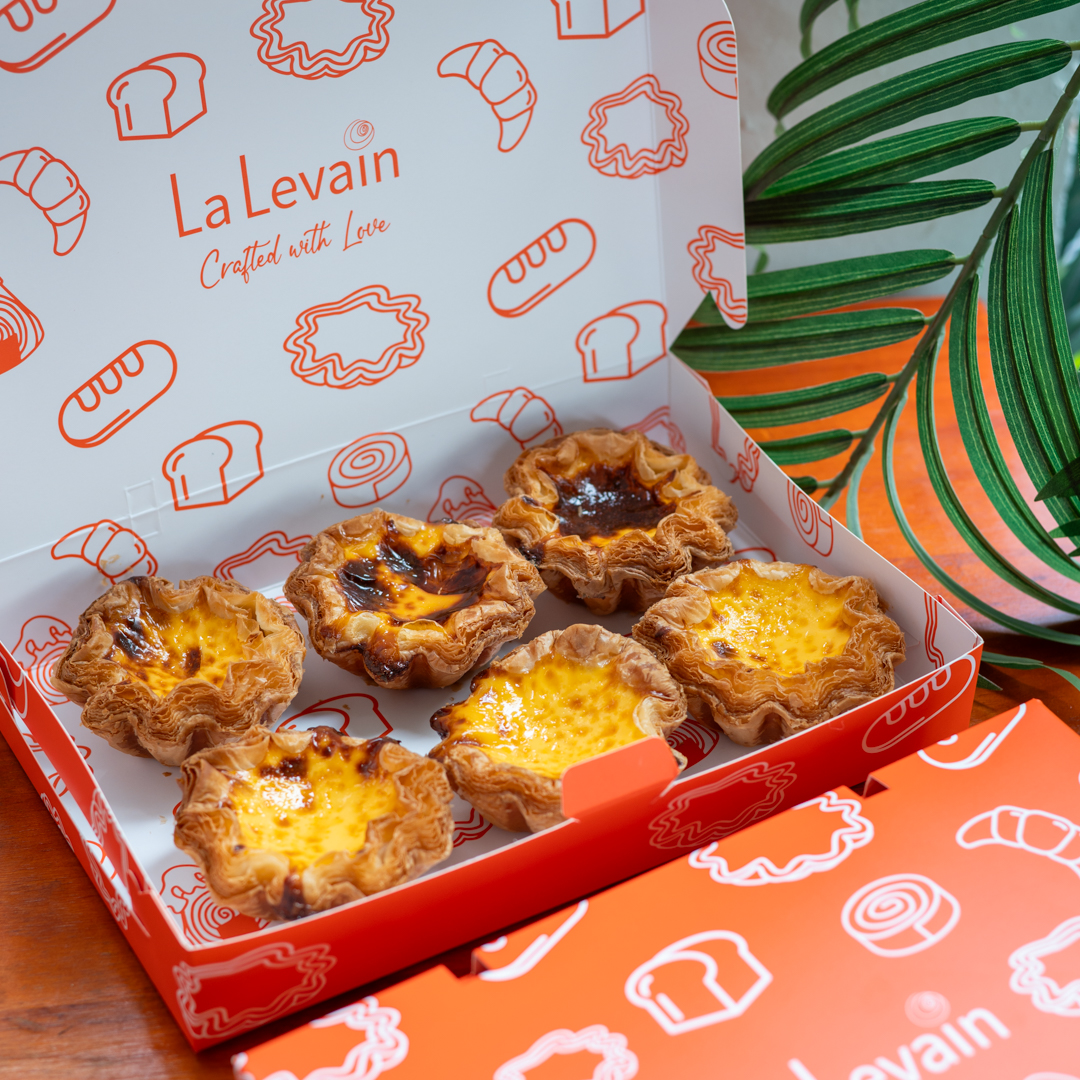
Get ready to immerse yourself in the rich and delightful world of German traditions as we explore the art of perfecting the classic Christmas Stollen.
With a touch of La Levain magic, this beloved holiday treat takes on a whole new level of deliciousness.
So grab a cup of hot cocoa, cosy up by the fireplace, and get ready to discover the secrets behind this delectable German delicacy.
The Origins of Christmas Stollen
The origins of Christmas Stollen can be traced back to Germany, where it is considered a beloved Christmas tradition.
This delightful treat, also known as German Christmas Bread, has a rich history that dates back to the 15th century.
The word “stollen” itself is derived from the Old High German word “stollo” which means a supporting wooden beam.
This is fitting, as the stollen is shaped like a loaf of bread with a rounded top, resembling the shape of a wooden beam.
Traditionally, stollen was made as a Christmas delicacy, filled with dried fruits, nuts, and spices.
It was often enjoyed with a cup of warm mulled wine or a hot cup of cocoa, making it the perfect treat to savour during the festive season.
Over time, the recipe for stollen has evolved, with modern variations including marzipan or almond paste filling.
However, the essence of this traditional German Christmas bread remains the same – a symbol of warmth, togetherness, and the spirit of the holiday season.
The Significance of Stollen in German Culture

Stollen holds a significant place in German culture, especially during Christmas time.
This traditional German fruit cake has been a staple in holiday celebrations for centuries.
Its origins can be traced back to the Middle Ages when it was prepared as a fasting bread.
Stollen is often associated with the city of Dresden, where it is known as Dresden Stollen or Christstollen.
The cake is typically made with a yeast dough and filled with a mixture of dried fruits, nuts, and spices.
La Levain’s version, contains fruits and nuts soaked in German Griottines cherry liquor.
It is then shaped into a loaf and baked until golden brown.
The finished Stollen is usually dusted with powdered sugar, giving it a snowy appearance.
In German culture, Stollen is not only a delicious treat but also carries symbolic meaning.
According to tradition, it represents the baby Jesus wrapped in swaddling clothes, symbolising the birth of Christ.
Stollen is often enjoyed during Advent, the period leading up to Christmas, and is traditionally shared with family and friends.
It is a cherished tradition that brings people together and adds a touch of sweetness to the holiday season.
Stollen has become a beloved symbol of German Christmas traditions and is enjoyed by people all over the world.
Its unique taste and historical significance make it a must-have during the holiday season.
The rich flavours of the dried fruits and spices blend perfectly with the soft, buttery texture of the cake.
Every bite is a delightful combination of sweetness and warmth. Stollen is not only a treat for the taste buds but also a feast for the eyes.
The powdered sugar coating gives it a festive and inviting appearance.
Whether enjoyed with a cup of hot cocoa or a glass of mulled wine, Stollen brings comfort and joy to those who partake in this delightful German tradition.
So, next Christmas, make sure to add Stollen to your holiday menu and experience the true taste of German Christmas spirit.
Traditional Methods for Shaping and Decorating Stollen
When it comes to making traditional German Christmas bread, known as stollen, shaping and decorating play a crucial role in creating the perfect festive treat.
The process of shaping stollen involves rolling the dough into a long oval shape and then folding it in half, creating the iconic stollen shape.
This technique ensures that the bread has a soft, tender interior and a beautifully golden crust.
Additionally, stollen is often decorated with a dusting of powdered sugar, which not only adds a touch of sweetness but also gives the bread a festive and snowy appearance.
Some bakers also like to adorn their stollen with candied fruits, nuts, or even marzipan, adding a burst of flavour and texture to the already delicious bread.

These traditional methods of shaping and decorating stollen have been passed down through generations, ensuring that each loaf is made with love and attention to detail.
In conclusion, shaping and decorating stollen is an important part of the German Christmas tradition.
The process of rolling and folding the dough creates a unique texture, while the addition of powdered sugar and other decorations adds a festive touch.
Whether enjoyed as a special treat on Christmas morning or given as a gift to loved ones, stollen is a delicious and beloved part of the holiday season. So, why not try Christmas Stollen from La Levain and experience the joy of sharing this traditional German delicacy with your friends and family.

